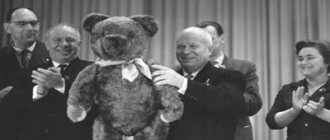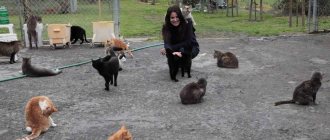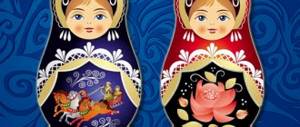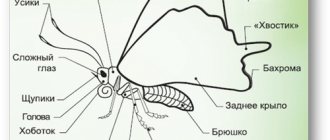Introduction
We live in the small beautiful city of Tver, where there are many remarkable places. And every year our city is more and more transformed, growing, and improving. The streets are lined with modern buildings, the sidewalks are tiled, numerous shops attract with colorful shop windows, and in the evening the city lights up with lantern lights.
But I want to tell you about the small modest street on which I live. This is Rotmistrov street. Being in the central part of the city, it continues to maintain silence and extraordinary calm. There are no big shops, no cafes and restaurants, no noisy offices. But there is a history here that you can touch just by walking down the street.
The relevance of the research work (project) lies in the fact that every resident of our city should not only know the name of their street, but also know the history of its creation. Streets are the face of any city, its unique inner world. Each street is unique and inimitable in its own way.
When we walk along the streets of our city, read their names, we think that there is not a single city in the world where there would not be streets named after outstanding people. The city of Tver is no exception. There are many large and small streets in our city. Some bear the names of famous writers, composers, others bear the names of people unknown to us, but we are so accustomed to these names that we do not think about who owns this name and what this person is known for. To know about the people whose city streets are named after means to know the history and culture of the country in which you live, to know its people.
Rotmistrov street. Such a familiar name, but we never thought about why it was called that.
Goal: to attract the attention of children, their parents, teachers, and city residents to the history of their hometown.
Objectives: expand knowledge about the city in which we live; to develop in children a sense of love for their city, respect for its traditions and customs, and to develop children’s interest in the history of their hometown.
If every resident of the city of Tver from childhood is interested in and knows the history of his city, the history of his street, then he will pass this information on from generation to generation, which will instill interest in the history of his native land and love for it.
THE STREETS OF MY CITY ARE NAMED AFTER THEM
Melnikov Artem Sergeevich
OGBPOU Ulyanovsk Medical College
THE STREETS OF MY CITY ARE NAMED AFTER THEM
“He who owns the present owns the past.
He who owns the past owns the future."
J. Orwell
A person is born into the world and, along with life, inherits the most priceless wealth - the Motherland. He has only one, he will never have another, just as it is not given to a person to live a second life. Each of us carries the image of the Motherland in our hearts. For our multinational people, every corner of our vast Fatherland is its own home, one common Motherland, stretching its vast expanses from the Barents Sea to the Pacific Ocean. We walk along the streets of our city, read their names and think: “Probably there is not a single city in the world where there would not be named streets, that is, streets named after heroes.” Our city is no exception. There are many large and small streets in our city. Streets bear the names of people known and unknown to us, but we are so accustomed to these names that we do not think about who owns this name and what this person is known for. To know about the people whose city streets are named after means to know the history and culture of the country where you live, to know its people.
If every person in Russia remembers and knows the history of their city and begins to pass it on to their children, then no one will ever be able to call us “Ivans who know no kinship.” While working on this project, we got acquainted with the history of the streets of the city of Ulyanovsk and learned about those after whom they were named. Hypothesis. Only a people who knows and remembers their history, traditions, and heroes are worthy of freedom and independence. We believe that the names of the streets of the city of Ulyanovsk reflect not only the history of our city, but also the entire country. The purpose of the study is to study the biography of the heroes after whom the streets of Ulyanovsk are named and to form the image of Victory in the historical memory of the people.
The object of the study is the history of the Great Patriotic War, the history of Victory.
The subject of the study is information about the biography of the heroes after whom the streets of Ulyanovsk are named.
The study poses the following tasks:
- Collect information about the biography of the heroes after whom the streets of Ulyanovsk are named.
- assess the state of students’ historical memory about the biography of the heroes after whom the streets of Ulyanovsk are named;
Research methods:
study of literature;
collecting information on the Internet
information processing;
preparing a presentation and defending the work.
The practical significance of the study lies in the fact that the assimilation of heroic historical traditions provides practical assistance for the implementation of the program of patriotic education of youth.
During the work on the project, a survey was conducted among 1st year students of OGBPOU UMK in the amount of 98 people. They were given the task: to write the names of streets, squares, avenues, alleys, boulevards of our city named in honor of the heroes of the Great Patriotic War?
After processing the survey data, it turned out that 1st year students practically do not know the names of streets, squares, avenues of their hometown, and why streets are named after them. They could not name the streets named in honor of the heroes of the Great Patriotic War.
Students named the names of the heroes Karbyshev, Tyulenev, Matrosov, Deev, Ablukova, but in addition to the correct answers they named streets named after revolutionaries, government officials, writers, cosmonauts, etc.
Streets not associated with the names of WWII heroes were named: Tupolev (aircraft builder), V.I. Lenin (revolutionary), Stolypin, Gaidar Aliyev, Ho Chi Minh, Goncharov, Babel, Bogdan Khlelnitsky, Leo Tolstoy, Gagarin, etc.
Despite this, 96 percent of students believe that today we can be proud of the exploits of the Great Patriotic War. The war remains the main event of Soviet history, which gives a new generation of Russians a sense of pride.
Live information about the war is disappearing. Today, only one quarter of students are well aware of the participation of their fellow countrymen and loved ones in the war, 38 percent have heard something about it, but do not know the details.
In this regard, we decided to devote our work to studying the biographies of heroes of the Great Patriotic War and heroes of combat operations in Afghanistan, after whom the streets of our city are named, and tell students about them.
Having studied the project materials, we learned that many streets in the city of Ulyanovsk are named in honor of our fellow countrymen, heroes of the Great Patriotic War. The work presents biographies and describes the exploits of Naganov A.F., Matrosov A.M., Ablukova A.M., Margelov V.F., Karbyshev D.M., Tyulenev I.V. and other heroes. These street names help preserve the memory of such exploits for many years and pass on history from generation to generation.
We all owe a huge debt to the veterans who laid down their lives to defend the Fatherland. It is they who need to be thanked for the fact that each of us can build our lives in peacetime. At the same time, it is important not only to provide them with a prosperous life, but also the memory of the feat that they accomplished for the sake of freedom and for the sake of you and me.
The project materials were used in classroom hours dedicated to the memory of those killed during the Second World War. The developed materials were transferred to the museum of OGBPOU UMK.
Main part
2.1. Street location
Rotmistrova Street is located in the Moskovsky district of the city of Tver.
It starts from Ordzhonikidze Street and runs parallel to the Lazuri River embankment to Volokolamsky Avenue. Until 1983, Rotmistrov Street was called Novaya. A quiet, peaceful street, hidden from prying eyes, surrounded on both sides by trees. The Lazur River flows nearby, which has long been a favorite of ducks.
2.2. Houses and buildings
The intersection of Rotmistrov Street and Orzhonikidze Street is a true masterpiece of Soviet architecture. The large columns standing on both sides of the road look very majestic. I learned that such columns are called propylaea. They were characteristic of Ancient Greece, and in the modern world propylaea are built mainly as part of particularly significant ceremonial architectural complexes. Probably the entrance to Rotmistrov Street was intended as an entrance to an expensive elite quarter. It looks especially impressive if you approach it from inside the block. This part of the street is very interesting for walking. Every house has (or had) fences and gates. They are not necessarily particularly architecturally outstanding. There are even simple posts and metal rods. But they exist, and this speaks to the estate character of the houses. In general, there is a lot here from the estates, and huge courtyards inside the blocks, and the clear rhythm of the houses, and mezzanines and pilasters.
All these houses are of classical Russian design. They were built after the end of World War II. The external richness of the design of the houses suggests that their architects sought to contrast beauty with the barbarity and destruction that the war brought, which stood behind the back of any architect of those post-war years.
Walking further, we unexpectedly discover a church in the courtyard of one of the houses. This is the Church of the New Martyrs of the Russian Tver community of the Orthodox Church of the Mother of God.
Currently, the city is developing rapidly, new houses are growing very quickly. Likewise, on my street, old Soviet buildings peacefully coexist with modern apartment buildings.
2.3. Rotmistrov Pavel Alekseevich
Whose name does my street bear? Rotmistrov Street got its name in honor of Pavel Alekseevich Rotmistrov (1901-1982), born in the village of Skovorovo, now Selizharovsky district, Tver region. Rotmistrov P.A. - Hero of the Soviet Union, chief marshal of the armored forces, honorary citizen of the city of Kalinin (our city bore this name until 1990).
Pavel was born into the family of a rural blacksmith, in which, in addition to him, there were also
8 brothers and sisters. He studied at a four-year rural school, graduated from the Selizharovsky School, after which he worked on the railway in Peno. Then he moved to Samara, where he was drafted into the army. Pavel connected his entire life with the army. Rotmistrov Pavel Alekseevich took part in the Civil War, was wounded in one of the battles, but was able to personally destroy a machine gun point. In 1921, he was awarded the Order of the Red Banner for courage.
2.4. Military exploits
By the advent of the Great Patriotic War, Pavel Alekseevich already had extensive experience in combat operations, held the position of deputy commander of the 5th Tank Division and took part in border battles.
On September 14, Colonel Rotmistrov was appointed commander of the 8th Tank Brigade, which in October completed a march of 250 kilometers in one day and approached the village of Kalikino near Kalinin. Kalinin by that time had already been captured by the Nazis. The Germans sought to break through to Leningrad. Rotmistrov's brigade had to stop them. The tankers immediately entered into battle with the Nazis. They held back the enemy near Kalinin for several days, and then went on the offensive and took part in his defeat in the area of the village of Mednoye. In December 1941, Rotmistrov's tank brigade launched an offensive near Klin and fought its way to Rzhev. Rotmistrov's tankers also distinguished themselves at Stalingrad, when the Nazis wanted to free their troops trapped in a ring. In February 1943, Rotmistrov began to command the 5th Guards Tank Army, which distinguished itself in battles in the Kursk direction. The most gigantic tank battle of the Great Patriotic War unfolded in the Prokhorovka area. The armored fist of the Nazis crashed against the might of Rotmistrov's tank army. In February 1944, our fellow countryman was awarded the rank of Marshal of the Armored Forces.
2.5. Places of memory
After the war, Pavel Alekseevich Rotmistrov continued to serve in the army and often visited his native places. In 1971, he was awarded the title of Honorary Citizen of the city of Kalinin. One of the streets of Tver today bears his name.
On the outskirts of Tver, not far from the village of Zavolzhsky, a T-34 tank stands on a pedestal. The feat of the tankers under the command of our fellow countryman is associated with these places.
At the Gorbaty Bridge there is also a memorial sign to the soldiers of the 8th Tank Brigade, commanded by Rotmistrov. It was installed on one of the defense lines of Kalinin in honor of those heroic events when tankers thwarted the enemy’s attempt to break through to Torzhok, going to the rear of the troops of the North-Western Front.








